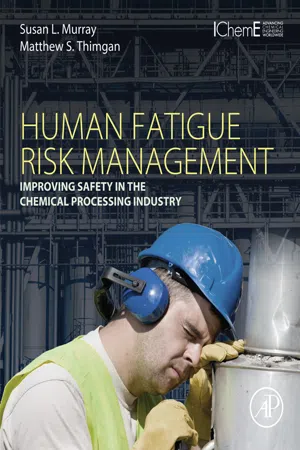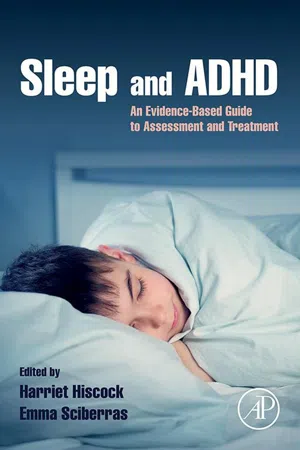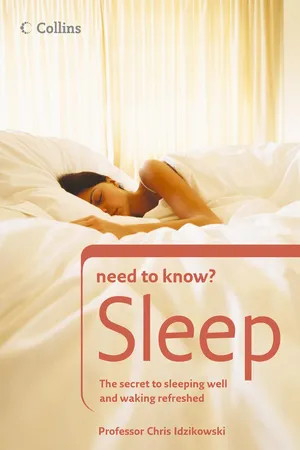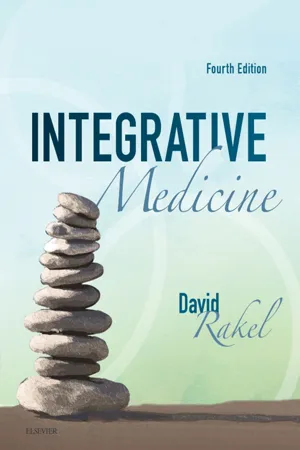Psychology
Sleep Hygiene
Sleep hygiene refers to a set of practices and habits that promote good sleep quality and quantity. It includes maintaining a consistent sleep schedule, creating a comfortable sleep environment, avoiding stimulants close to bedtime, and engaging in relaxation techniques. By following good sleep hygiene, individuals can improve their overall sleep patterns and enhance their mental and physical well-being.
Written by Perlego with AI-assistance
Related key terms
Related key terms
1 of 4
Related key terms
1 of 3
5 Key excerpts on "Sleep Hygiene"
- eBook - ePub
Human Fatigue Risk Management
Improving Safety in the Chemical Processing Industry
- Susan L. Murray, Matthew S. Thimgan(Authors)
- 2016(Publication Date)
- Academic Press(Publisher)
Chapter 4Sleep Hygiene recommendations
Abstract
For employees or critical personnel that fall under the fatigue risk management system, this chapter describes common environmental and behavioral factors that interfere with sleep and countermeasures that may remedy the source of the sleep disruption. Sleep Hygiene refers to ways to clean up the sleep routine and the sleep environment to improve the ability to increase sleep duration and consolidation throughout the night as well as decrease sleep onset latency. These recommendations are particularly important for shift workers who might not be sleeping during the optimal time of day. If an employee is having difficulty sleeping, these recommendations will provide starting points and ideas to improve their ability to sleep.Keywords
Sleep disruption coffeeOften, people do not realize the number of environmental factors and behaviors that impair our ability to fall asleep or maintain sleep. There are numerous things that we can do to mitigate these sleep disruptions and fall asleep faster. These recommendations are collectively known as “Sleep Hygiene” practices and can be thought of as cleaning up both the physical and mental environment at or around bedtime. These recommendations can be used to help an employee on both a regular schedule and, importantly, for a person working a shift work schedule. Not every contingency can be addressed here, but the information provided can help one design accommodation to obtain the best sleep possible. Using this information, both management and employees can identify where their practices conflict with what we know about the biology of falling asleep. The information presented here can be supplemented by a wealth of information on specific problems found from trustworthy sources on the web and elsewhere. This information may help move someone from being frustrated with their poor sleep to being able to obtain more, and better, sleep faster. - eBook - ePub
Sleep and ADHD
An Evidence-Based Guide to Assessment and Treatment
- Harriet Hiscock, Emma Sciberras(Authors)
- 2019(Publication Date)
- Academic Press(Publisher)
There is currently debate about the use of the term “Sleep Hygiene” amongst sleep clinicians and researchers. The term “hygiene” is a historical term which is associated with the social hygiene movement in late 19th and early 20th centuries. During this time, there was an attempt to control undesirable behaviors (e.g., prostitution and other vices) through scientific research methods. Many of the leaders of this movement were also proponents of eugenics. As such, the term “Sleep Hygiene,” which was popularized during this time, brings forth negative connotations for many and thus there is a desire to change this term. Many pediatric clinicians and researchers prefer the term “healthy sleep practices” rather than Sleep Hygiene. We will therefore use healthy sleep practices throughout this chapter and anticipate that others will also consider changing to this term both when communicating with patients/clients, families, as well as when educating other health professionals or the public about sleep practices.5.2 What Are Healthy Sleep Practices?
While healthy sleep practices have a long history of being recommended for sleep difficulties, specifically insomnia, the scientific evidence for these practices is hard to ascertain. One reason for this is there are a number of definitional issues as to what strategies are included in this umbrella term and where the boundary exists with other intervention strategies. In fact, recommendations for healthy sleep practices and systematic behavioral interventions are often conflated (Smith & Corkum, 2016 ), resulting in behavioral interventions sometimes being considered within the group of strategies under the healthy sleep practices umbrella term. To better understand what is included in the term Healthy Sleep Practices , it is important to think about sleep intervention more broadly. It is generally agreed that sleep intervention should be implemented as a progression of steps from strategies that pose the least to most risk, starting with psychoeducation, then healthy sleep practices, then behavioral sleep interventions, and the last step being sedative/hypnotic medication (see Fig. 5.1 ). This stepped approach to treatment should be followed for typically developing children, as well as for children who have neurodevelopmental disorders (NDDs), such as attention deficit hyperactivity disorder (ADHD; Corkum, Davidson, Tan-MacNeill, & Weiss, 2014 - eBook - ePub
Sleep
The secret to sleeping well and waking refreshed
- Prof. Chris Idzikowski(Author)
- 2010(Publication Date)
- HarperCollins Publishers(Publisher)
4 How to sleep betterIn our ‘here and now’ society, sleeping pills can offer a quick-and-easy fix. But although they may provide a temporary answer, they won’t help in the long term – and many of them have side-effects. With practical suggestions on how to improve your sleeping environment, encouragement on getting into good sleeping habits, and simple relaxation exercises and alternative therapies, this chapter offers you healthier and longer-lasting solutions.Sleep Hygiene
The rather strange term ‘Sleep Hygiene’ is one that is often used in sleep medicine today, and refers to environmental and lifestyle issues that can affect sleep. Applied correctly, Sleep Hygiene can play a key role in getting a good night’s sleep.The basic essentials for good ‘Sleep Hygiene’ are to try to have regular times for sleeping, to avoid eating or drinking anything that might disturb sleep and to be as comfortable as possible. That comfort should be physical (the right pillow, mattress, duvet, temperature, light, heat, humidity and noise) and mental (feeling-well, carefree, safe and relaxed).Top tips for good Sleep Hygiene
• Avoid alcohol, tobacco or caffeine – especially at night. • Try to avoid exciting or emotionally upsetting activities too close to bedtime. • Do not have a television in your room. Your bedroom should be kept exclusively for sleep (and sex). - eBook - ePub
- John T. Peachey, Diane C. Zelman(Authors)
- 2021(Publication Date)
- Greenwood(Publisher)
8 PreventionSleep disorders represent a broad range of signs and symptoms, but most can be prevented using similar approaches. This chapter begins with an overview of general prevention strategies, particularly Sleep Hygiene, and presents disorder-specific recommendations that individuals may use to prevent the onset or progression of disordered sleep. Subsequently, a review of broader, community-based and public health approaches targeting the prevention of sleep disorders and negative consequences of insufficient sleep is presented. These strategies aim to reduce the greater costs to society.INDIVIDUAL PREVENTION STRATEGIESIndividuals speaking with their primary care doctor about difficulties sleeping or searching online for recommendations are likely to receive, among other interventions, general Sleep Hygiene tips. Although Sleep Hygiene is an excellent preventive strategy, used alone it is usually ineffective for treating sleep disorders. Similar to how dental hygiene strategies such as daily toothbrushing prevent cavities but do not treat cavities once they have occurred, Sleep Hygiene is a set of universal strategies that prevent sleep problems from occurring or worsening. Additional general recommendations such as stress management and disorder-specific techniques can provide further defense against the development of disordered sleep.General RecommendationsSleep Hygiene recommendations can be subdivided based upon the four general factors or systems that influence sleep, specifically, environmental factors and those factors impacting the homeostatic sleep drive, circadian rhythm, and the hyperarousal stress response.The ideal environment for sleep is similar to a cave. That is, individuals sleep best when their surroundings are dark, quiet, safe, and cool. Although darkness is general is important, circadian systems that respond to daylight are most sensitive to blue-spectrum light, which is commonly found in sunlight and light emitting diode (LED) light bulbs and backlit screens such as computers, phones, and televisions. Therefore, turning off artificial light sources is recommended at night. Light may also affect sleep even when the eyes are closed, so in situations where light exposure cannot be controlled (e.g., streetlights and bed partners using LED screens), individuals may benefit from use of an eye mask while sleeping. - No longer available |Learn more
- David P. Rakel(Author)
- 2017(Publication Date)
- Elsevier(Publisher)
These benefits were still present at a 6-month follow-up in contrast to patients treated with zopiclone who showed no ongoing benefits of treatment. 125 CBT-I alone was also found to be no less effective than CBT-I paired with zolpidem. 126 CBT-I has also been shown to enhance depression outcomes for patients with comorbid insomnia. 127 Sleep Hygiene Sleep Hygiene refers to a list of basic behavioral and environmental recommendations that promote healthy sleep. These can include most of the suggestions reviewed earlier, such as managing substances, regulating one’s sleep–wake schedule, obtaining adequate exercise, and creating an environment conducive to sleep. Sleep Hygiene has not been demonstrated effective as a stand-alone intervention, although most sleep specialists believe that it can be an effective aid to a multicomponent treatment approach. 128 Cognitive Restructuring Cognitive restructuring techniques systematically review, reconsider, and replace thoughts and beliefs that trigger sleep-disruptive anxiety and rumination. Box 9.8 provides examples of common dysfunctional thoughts about sleep. These thoughts are dysfunctional because they distort the truth, set up unrealistic expectations, and inevitably trigger anxiety. For example, the belief that “I can and must get myself to sleep” is nearly ubiquitous among patients with insomnia. Because it implies that falling asleep is under one’s conscious control, this belief leads to excessive sleep effort, which then backfires by increasing arousal. Similarly, the common belief that “I should always sleep through the night” sets the stage for a reflexive reaction of frustration, disappointment, and even self-recrimination with wakefulness after sleep onset. In reality, what wakes one up is not necessarily what keeps one awake. Frequently, our strong reaction to the awakening, which is based on a dysfunctional belief, is the real problem
Index pages curate the most relevant extracts from our library of academic textbooks. They’ve been created using an in-house natural language model (NLM), each adding context and meaning to key research topics.
Explore more topic indexes
Explore more topic indexes
1 of 6
Explore more topic indexes
1 of 4




